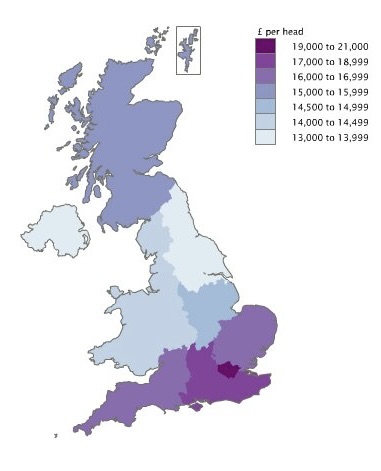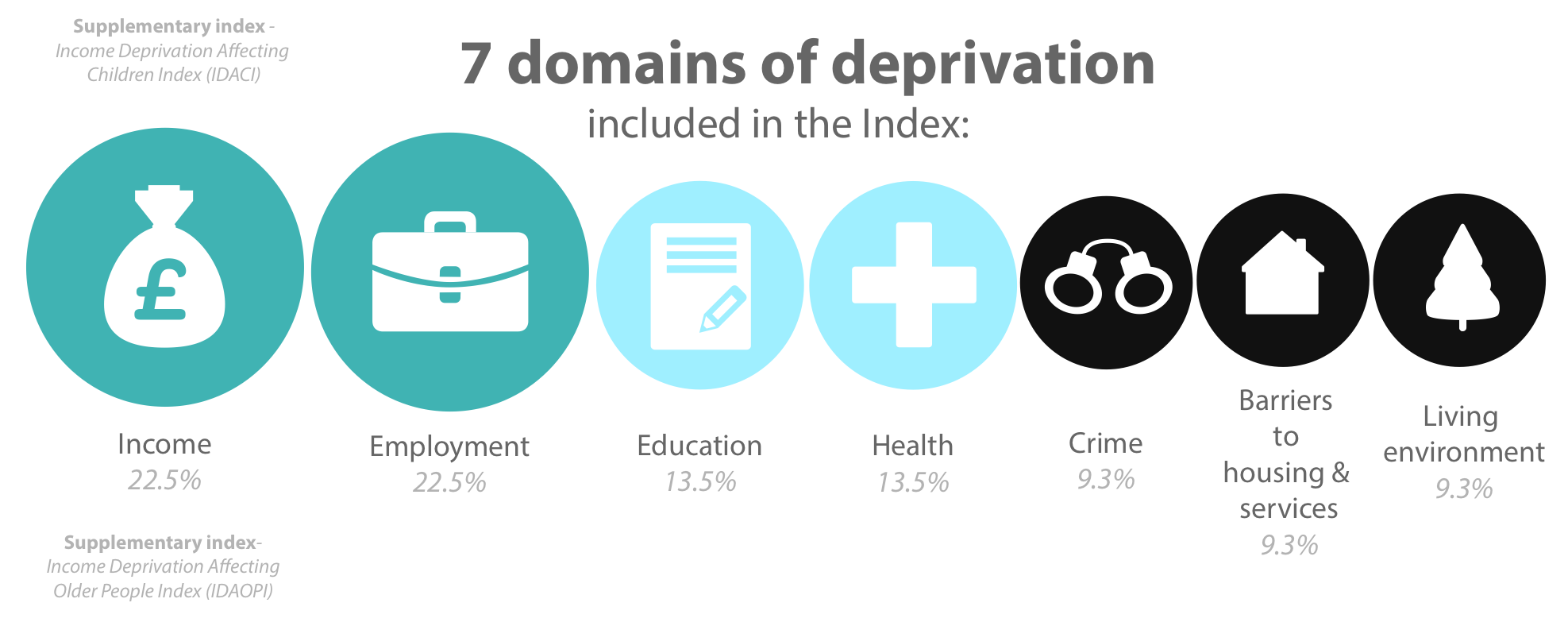Regeneration
1/21
Earn XP
Description and Tags
Name | Mastery | Learn | Test | Matching | Spaced |
|---|
No study sessions yet.
22 Terms
Regeneration
Rebranding
Reimaging
Regeneration
The processs of improving an urban or rural place by making positive changes which may include redevelopment or renewal
Rebranding
Creating a new look or reputation for an area to rebrand a place for visitors or investors, may also inlude renaming of places e.g. Brönte country
Reimaging
How the image of a place is changed e.g. how its portrayed in the media
Term used by those in charge of regeneration and rebranding, and tourism agencies when developing images for particular places
Economic change
Primary Sector
Producing food crops and raw materials
Secondary Sector
Manufactouring finished products
Tertiary Sector
Providing services, either:
Private (retail, tourism)
Public (healthcare, education)
Quaternary Sector
Providing specialised services in finance and law, or industries such as IT and biotechnology
UK economic change
Decline of primary and secondary sectors (old economy)
Growth of tertiary and quaternary sectors (post-industrial economy)
Changes between 1980 and 2015
Primary decreased 45%
Secondary decreased 43%
Tertiary increased 49%
Quaternary increased 113%
Clark - Fisher Model
As a country developes, primary industries decline (UK industrial revolution) as secondary industries increase. As globalisation shifts manufacturing towards Asia and less developed countries (global shift), and standards of living in the UK increase, secondary industries decline and tertiary becomes one of the leading industries, with quaternary also increasing

Regional inequalities: UK
High incomes in London
Capital city
Major company headquarters
Large Quaternary sector (London Docklands major IT hub)
Job availability
London has the highest % of students with GCSE passes and adults with a university degree
This relationship is linked with employment - those with higher qualifications are more likely to live in London/ move there
Then their children are more likely to pass GCSEs with high grades as a result of paid extra tuition, or a culture of doing homework
Low incomes Midlands
Global shift
Deindustrialiation
Brain drain
Declining secondary sectors

Purpose for regeneration
Regeneration is done to create a balance and eradicate social and economic inequalities. By regenerating an area, business opportunities arise which improve social facilities and overall quality of life and wellbeing
Engagement and experience of a place
There are also variations in the level of community engagement, measured through local and nation election attendance, the number of community activities and the number of developed and supported local community groups
If an areas is said to be more deprived, it will have a weaker and poorly integrated community; this can be managed by creating social groups and encouraging members to join
The lived experience and attachment of places varies according to: Age, Gender, Ethnicity, Length of residence, Levels of Deprivation & Economic Background
Conflicts can occur between different groups in communities who have contrasting views on priorities and strategies for regeneration. The causes to these conflicts can be due to the lack of political engagement and representation, ethnic tensions, inequality and lack of economic opportunity
Attachment and engagement
Why does attachment and engagement vary?
Population density
Length of residence
Ethnicity (language, cultures)
Social climate(e.g. COVID)
Age (university, retired, childhood)
Gender (gender dominatedd sports, expectations of women/mothers to be more involved)
Economic status (economic freedom and time, working locally, working from home)
Family or single
The role of UK Government Policies
By investing in infrastructure, such as high speed rails and airport developments, UK governments can maintain growth and improve accessibility to regenerate regions
Government actions may prioritise national over local needs and opinions which can delay regeneration projects and therefore worsen inequalities
UK government decisions about international migration and the deregulation of capital markets (allowing for foreign investment in London real estate) significantly impact growth and direct/indirect investment
The role of local Government Policies
Local governments compete to create business environments with designated areas for development to attract domestic and foreign investors
Local interest groups are vital in decision-making and creating regeneration projects
However, there is often conflict between these groups as interests differ
Urban and rural regeneration strategies include:
Retail-led Plans: Creates business and job opportunities
Tourism: Brings money into the area and provides a flow of culture and positive media attention
Leisure and Sport: Allows for community integration and social wellbeing
Cumulative causation
The idea that one initial economic change can lead to a range of other changes that follow
The process of self-sustaining economic growth in a city or region
Referres to positive feedbacks caused when an initial investment (e.g. a new coal mine) creates the conditions necessary for further private and public investment
Multiplier effect
The way that economic success (e.g. opening of a new business) can help support other businesses and jobs in the local area
Can be positive or negative
CASE STUDY: Identity
Bristol
Fators contributing to the identity of Bristol
History
Important location for marine trade
Prospered as a processing centre for sugar and tabacco imported from the Americas in 17th and 18th centuries
Supplied textiles, pottery and glass to the Americas
Historic involvement with Transatlantic slave trade, becoming a leaving slaving port
Sport
Bristol City Football Club
Traditions
Bristol International Balloon Fiesta (festival of hot air ballooning with teams from across UK and world joining to celebrate)
Architecture
Mix of architectural periods present
Medieval castle and fortified city
Tudor mansions
Georgian squares
CASE STUDY: Shaping a local place
Bristol
How different factors have shaped Bristol
History as port and trading centre
Old, derelict warehouses and factories refurbished along Bristol harbourside (Mshed, Tabacco museum)
Now lots of restaurants and bars along harbourside (leisure and toursim dominated)
Global shift
Shift from main income through port and trading to tertiary industries
Increase in creative industries and media (Wallice and Gromit - Aardman Animations)
Mixed economy, high tech manufacturing (British Aerospace), financial services and ICT (Temple Quarter)
Areas of deprivation created by global shift, closure of industries leaving uneeded warehouse space
Containerisation doesnt allow Bristols small harbour
Largely an affluent city, with wealth concentrated in north and western areas e.g. Clifton
More deprivation found in south and east e.g. Hartcliffe
Many parts of the city becomming increasingly gentrified e.g. Stokes Croft
Identity and populations
Increasingly young and diverse population due to appeal to migrants from other parts of UK and abroad (18% minority black and asian groups)
Multiple universities adding to this trend
2009-2019 over 7500 jobs created from FDI
Identity has changed as the city has become increasingly young and ethnically diverse
Increasing gentrification can cause conflicts over identity
CASE STUDY: Contrasting place
London Docklands
Why London Docklands needed to be regenerated
Ageing population
Global shift, containerisation shifting docks east creating mass unemployment and derelict docks and warehouses
Council estates
12,000 jobs lost between 1978-1983
Population decline of 100,000 between 1971-1981
Achievements
High rise buildings designed to stimulate quarternary sector, multiplier effect
High-earning jobs create a ‘trickle down’ effect generating jobs to poorer communities
Older people moved out, bringing out a younger woking population (average age is 31)
Brownfield sites used
Extension of jubilee line promoting public transport and reducing carbon emissions
Ethnically diverse population, celebration of cltures
Proximity to river attractive for developers
Fast track planning permission allowing infrastructure to be built quick and cheap
Tax breaks attracts businesses to relocate there, brings jobs into area
Right to buy scheme, entering prive sector that benifits local economy over council
Problems
Large scale immigration running British people out of jobs?
Hostility created towards ethnic minorities?
Still pockets of deprivation (2012: 27% of Newhams working population earned less than £7/h)
Building of London City Airport, new roads and railways causing air pollution and sound pollution
Right to buy scheme forcing lower-income people in social housing out
Gentrification - riverside properties now viewed as desireable and therefore very expensive, big gaps created between rich and poor
CASE STUDY: Comparing Bristol Harbourside and London Docklands
Similarities
Both historically major ports of great significance that had to be relocated to accomodate deeper waters due to containerisation, leaving area derelict
Mass industry closure and job loss, population decline
Redevelopment financed by a mixture of public and private money
Differences
London Docklands Development Corporation (LDDC) given planning powers that passed local councils, allowing companies to obtain tax breaks on new buildings to attract investors
London has been re-imaged as a financial district, Bristol re-imaged as creative sector, focusing on media and art (WeTheCurious, M-shed, Watershed)
Bristol embraced ‘most’ history surrounding the port with museums (SS great Britain, Steam train rides), heavy tourism, whearas London is more business based with office buildings
CASE STUDY: Community and belonging
Bethnal Green
Bethnal Green in the 1950s
Small, independent, local shops
Strong familial ties
Working locally, directly contributing to local economy
Working locally means seeing / knowing same people everyday
Poor working class community, a common aspect between all - no alienation
Small terrace housing, everyone is close proximity with back-to-back gardens
Lack of communication devices forcing people to communicate with locals, going outside to play
Bethnal Green now
Jobs arent located locally, lack of presence of people during day
Lack of local shops and interaction due to uprising of Amazon, online supermarkets
Online communications, people arent forced to communicate locally
Migration
Measuring change
Index of Multiple Deprivation
Index of Multiple Deprivation
Uses seven data domains weighted towards income and employment

Measuring impacts of regeneration
Social
Health (% in poor health)
Education (% seeking higher education, % passed english and maths GCSE)
Crime (crime rates, recorded crimes)
Deprivation (% living in deprivation, % living below poverty line, socail housing)
Economic
Employment (unemployment rate, % in full time employment)
Income (minimum wage, median income)
Environmental
Green space (% coverage of public green spaces, air quality index, EQS survey)
CASE STUDY: Successful places?
Sydney ‘Sun Belt’
Sydney is part of an economically successful region along Australia’s South-East coast, stretching 2000km from Brisbane to Melbourne
Strengths in the quaternary sector
$337 billion GDP in 2013 (Australia’s largest)
Young, economically active workforce (median age of 36 compared to UK’s 41)
Half of Australias top 500 companies located there
Environment attracts business (beaches, harbour and climate)
Leading financial centre for the Asia-Pacific region
Governments have embraced globalisation by deregulating banking and finance (allowing any overseas bank to operate there), and focusing on the country’s inwards migration policy on well-qualified professionals (points system)
7th highest average income in the world
Because of demand, property is extremely expensive
However it also ranks 10th in the world for quality of life
However, some of Australia’s remote rural areas are losing young people and their skills (brain drain)
CASE STUDY: Successful places?
Middlesborough
Why is regeneration neccessary?
Unemployment 14% (twice national average)
High levels of deprivation (among worst in country)
Poor educational standards (1 in 3 schools requiring improvement)
Population decline due to out migration
Outward migration has resulted in a concentration of povery and an ageing population
Around 20,000 people have left since 1990
Causes of decline
Global shift causing deindustrialisation and closure of manufacturing industries (negative multiplier effect)
Closure of S.S.I. steelworks in 2015 has led to a negative multiplier effect on the local economy
2008 Global reccession caused closure of remaining small-scale businesses and services
A failure to attract new investment and to create jobs to replace those lost
Functions and characteristics
The city has become more diverse due to international migration but less so than other more successful cities (11 % ethnic minority population)
Cheap accomodation in the city has been used to house aylum seekers resulting in tensions that were reported in the national media
Lack of opportunities has lowered motivations for academic achievement
Young, bright people move away for better oppurtunities, driving away skilled workforce
Environment
Dumping of waste affects quality of life and creates health and safety problems
CASE STUDY: Explaining success of places
Middlesbrough and Bristol
Middlesbrough
Accessibility
Not on the UK motorway network or a mainline train route
Long distance from London
Connectedness
Local airport has struggled to attract passengers
Limited higher education oppurtunities
History
A centre for industrial revolution mining, shipping, engineering, steel and petrochemicals - many of there industries now closed
Planning
Almost a forgotten corner of the North East
Never benifited from government regional investment
Recieved EU funding as a transition town, but ceased after Brexit 2020
Bristol
Accessibility
Located on the M4
Good rail links to London (direct trains)
Connectedness
Major airport serving the South West of the UK (Bristol Airport)
Major universities (Russel group)
Part of M4 growth corridor
History
Historical port that has been successfully regenerated to suit tertiary and quarternary sectors
Planning
Close to rural areas, attractive place to live
Core Periphery Model
Core
Successful
Attracts investment
At expense of periphery
Bring high profit value added goods to periphery and semi periphery areas
Periphery
Unsuccessful
Benifits core areas due to outward migration of people seeking higher education and jobs
‘Brain drain’
Brings low-wage labour and raw materials to core and semi-periphery areas
CASE STUDY: Rebranding Rural Places
Brontë Country
Post production countryside
Rural villages with ties to English Literature and heritage receive large national and international tourists, which can benefit local businesses (shops, accomodation, cafes) and local people (employment opportunities)
In Haworth (where the Brontë sisters grew up), regeneration is focused on attracting more tourists by refronting shops in a victorian style and running events (e.g. 1940s weekend, hosting the Tour de France)
CASE STUDY: Regenerating Rural Places
Cornwall
Why does Cornwall need regeneration?
Post-production countryside
Suffers from rural depopulation
‘Periphery’
Far from ‘core’ regions and economic hubs, not ideal for businesses
Poorly serviced by transport infrastructure
‘Old’ economy based on primary sector
Tin prices collapsed due to cheaper supply overseas
European quotas on fishing means that is also declining
Seasonal toursim, unsustainable income
Gentrification
Ageing population
Newquay Aerohub
A partnership between Cornwall Council and private sector investors
Process of diversifying Cornwalls economy away from tourism dependence
Aims to attract investment from an viation and aerospace ‘hub’
Hoped that 700 high value, skilled permanent jobs would be generated in the first year
By 2016 only 450 jobs had been created
Building on greenfield sites
Watergate Bay, Newquay
Extreme Sports Academy targets young adults, offering courses in surfing, water skiing, and kite surfing
Watergate Bay Hotel open year-round and employ 60 people
Jamie Oliver's ‘Fifteen’ opened in 2006 and trains young people in catering - fifteen 16-24 year olds from disadvantaged backgrounds selected for training each year (work at restaurant and train at college)
EDEN Project
Built on the site of a former quarry
Year round science/ education attraction
In its first ten years 13 million visited, generated an extra £1 billion for cornish economy, employed 700 people directly and made 3000 jobs elsewhere (positive multiplier effect)
Now making use of geo-thermal energy to heat rainforest biome dome and will soon provide renewable geothermal energy for 7000 local homes
Using science/ environment as a strategy to regenerate
Largely deemed sucessful but negatives include traffic generated and cost (£140 million)
Combined Universities
Increased range of uni courses and developed knowledge economy
University College Falmouth and Exeter University joined forces to create the CUC together with Penwith and Truro colleges
Also helps graduates set up own businesses or secure jobs in knowledge companies in area - trying to reduce 'brain drain'
Student economy in Falmouth has resulted in healthy property rental market and thriving economy of bars and restaurants